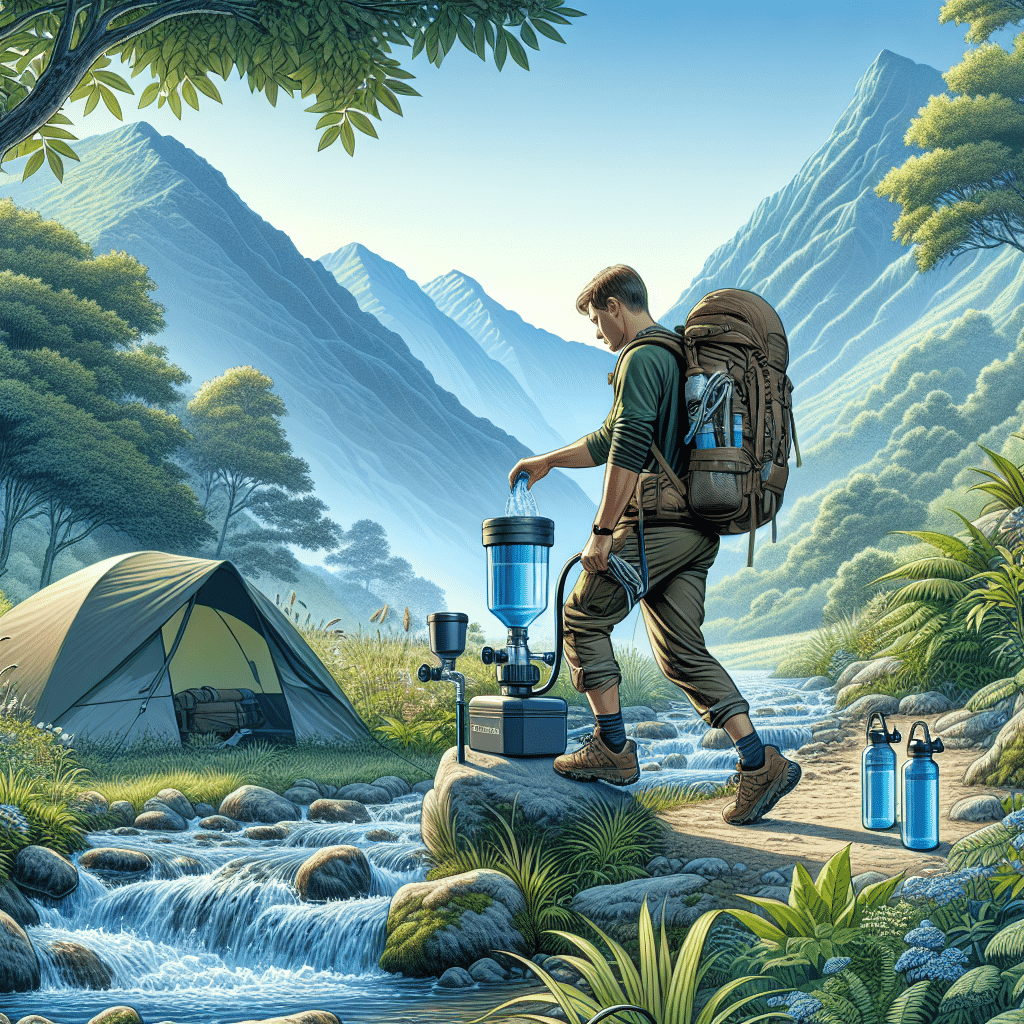Smart Strategies for Storing Filtered Water While Hiking
Hiking is a refreshing way to immerse yourself in nature while promoting physical fitness. One critical aspect of hiking is maintaining proper hydration, especially during prolonged outdoor adventures. Proper storage of filtered water is essential to ensure you have adequate hydration throughout your journey. Below are detailed strategies to effectively store filtered water while hiking.
1. Choose the Right Containers
When deciding on containers for storing filtered water, consider the following options:
-
Collapsible Water Bottles: Lightweight and space-saving, these bottles are perfect for hiking. They can be flattened when empty, making them easy to pack.
-
Hydration Bladders: Ideal for longer hikes, hydration bladders allow you to sip water conveniently while on the move. Ensure the bladder has a high-quality filtration system if it’s used for untreated water.
-
Stainless Steel Bottles: Durable and capable of maintaining the temperature of the water, these bottles are excellent for both warm and cold weather. They are less prone to smelling or tasting after multiple uses.
2. Ensure Proper Filtration
Before storing water, ensure it is adequately filtered using one of the following methods:
-
Portable Water Filters: These filters can remove bacteria, protozoa, and sediment. Look for models that meet or exceed EPA standards for water purification.
-
UV Purification Devices: Utilizing ultraviolet light to kill harmful microorganisms, these devices are lightweight, chemical-free, and easy to use. Remember, UV light requires clear water for effective treatment.
-
Chemical Purification Tablets: These tablets can be a backup option. However, they often require time to be effective, so plan accordingly.
3. Prioritize Cleanliness
To keep your filtered water safe and uncontaminated:
-
Use Clean Hands: Always wash your hands before handling water containers to prevent the introduction of contaminants.
-
Prioritize Clean Containers: Before filling your containers, ensure they are scrupulously clean. Residual dirt or contaminants can compromise even freshly filtered water.
-
Seal Containers Properly: Ensure that all lids and caps are securely fastened to prevent contamination. Consider using containers with airtight seals.
4. Monitor Temperature
Temperature affects both the longevity and taste of filtered water.
-
Keep Water Cool: When hiking in warm weather, store your water in insulated sleeves or directly in your pack’s insulated compartments to keep it cooler longer.
-
Awareness of Sun Exposure: Avoid leaving water bottles in direct sunlight for extended periods, as this can lead to bacterial growth and deteriorate the plastic in some containers.
5. Optimize Storage Strategies
Maximizing space and convenience is vital for effective water storage while hiking.
-
Strategic Packing: Place your water containers in easily accessible areas of your pack to ensure you can hydrate without rummaging through your gear.
-
Water Separation: If you’re carrying both filtered and unfiltered water, use different colored containers or labeling systems to avoid confusion.
-
Utilize Side Pockets: Many hiking backpacks come with mesh or insulated side pockets. Store your hydration system there for easy access while on the trail.
6. Plan for Resupply
If your hike extends beyond a day, consider these strategies for resupplying your water:
-
Know Water Sources: Research your hiking route and identify reliable water sources. Make a note of safe places where you can refill your containers.
-
Purification Plans: Carry purification tools or tablets to treat water from natural sources safely.
-
Pre-Hike Planning: Create a water plan that includes how much water you’ll need each day based on distance, exertion levels, and weather conditions.
7. Keep Track of Hydration
Monitoring your hydration levels is crucial for maintaining your energy and health on the trail.
-
Use a Water Tracker App: Several mobile apps can help you track water intake throughout your hike. Input your starting water levels and adjust based on daily consumption.
-
Hydration Reminders: Set reminders to drink at regular intervals to prevent dehydration, especially during strenuous activities.
-
Color Check: Pay attention to the color of your urine; pale yellow indicates good hydration while dark yellow signals dehydration.
8. Consider Weight and Volume
Balancing hydration and carrying capacity is essential for the efficiency of your hike.
-
Water Weight: Remember that one liter of water weighs about two pounds. Consider your weight limit when deciding how much water to bring along.
-
Lightweight Gear: Choose the lightest possible bottles or hydration systems to reduce your pack’s overall weight.
-
Refilling Opportunities: By being aware of your route, you can intelligently plan your water load to avoid carrying excess weight unnecessarily.
9. Practice Good Hydration Habits
Developing hydrating habits is just as important as having water on hand.
-
Pre-Hike Hydration: Begin your hike well-hydrated by drinking water in the hours leading up to your trip.
-
Regular Drinking Schedule: Make it a habit to take a small sip of water every 15-20 minutes, especially during strenuous segments of your hike.
-
Post-Hike Refueling: After your hike, replenish lost fluids to support recovery and ensure you are hydrated for your next outdoor adventure.
10. Prepare for Emergencies
Even with meticulous planning, it’s prudent to prepare for unforeseen circumstances.
-
Emergency Water Storage: Carry a small amount of water in emergency packs. These should be separate and easily accessible.
-
Be Aware of Symptoms: Know the signs of dehydration, such as fatigue, dizziness, or dark urine, so you can take action quickly.
-
First Aid for Dehydration: Be prepared with electrolyte powders to mix with water in case of severe dehydration symptoms.
By incorporating these smart strategies for storing filtered water, hikers can ensure they remain hydrated, healthy, and energized during their outdoor adventures. Constantly evaluate your hydration options and choices to find what works best for you, and enjoy the great outdoors safely.
